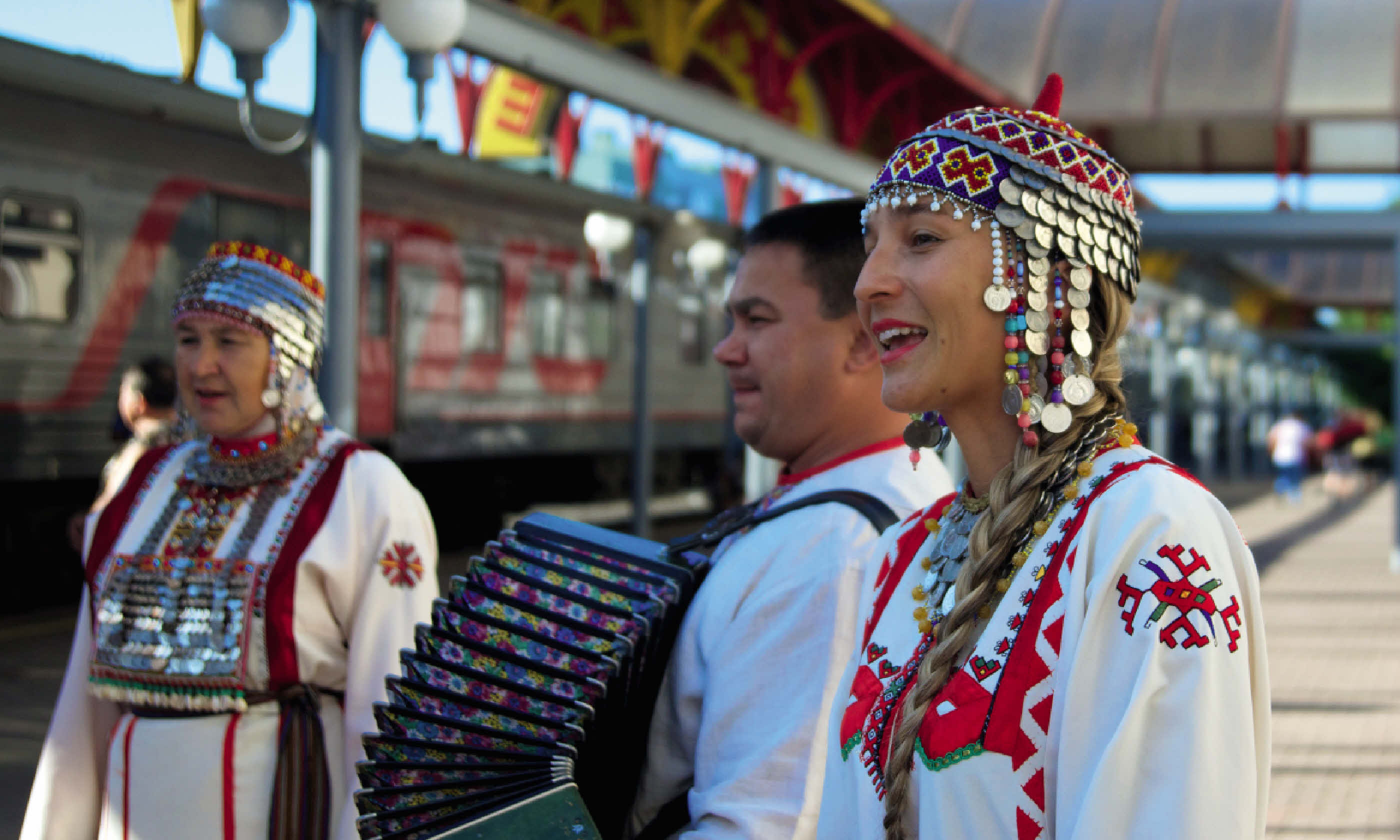
Exploring Russia's federal republics
Within the vastness of Russia sits 22 tiny federal republics, enclaves where minority peoples – from meadow redheads to Europe’s last pagans – cling to their traditions. But with what success?
Train number 054 left Moscow’s Kazansky Station bound east for the Middle Volga’s unheralded republics. The night train was lively. Four noisy men drank vodka and played cards in one compartment; two mothers barely contained boisterous infants in another. Throughout a fitful night’s sleep I was aware of passing stations and shadowy moonlit forest.
The next morning, 750km later, we disembarked at Cheboksary – but I knew little about my destination. The Russian Federation incorporates 22 federal republics. Some are better known for the wrong reasons, such as Chechnya. And you may have heard of Russia’s latest acquisition, the Republic of Crimea?
I’d joined a pioneering small-group trip to six of these republics clustered around the River Volga’s lowlands, west of the Urals. I’d heard of Tatarstan but Chuvashia, Mari El, Udmurtia, Mordovia and Bashkortostan remained mysteries. Ivan the Terrible brought them into Russia’s fold when overcoming the warlike Tatars in the 1550s. He established a series of forts along the Volga to guard Russia’s borders across the lands of these minnow minorities; they were eventually subsumed into the Russian Empire and, over time, forgotten.
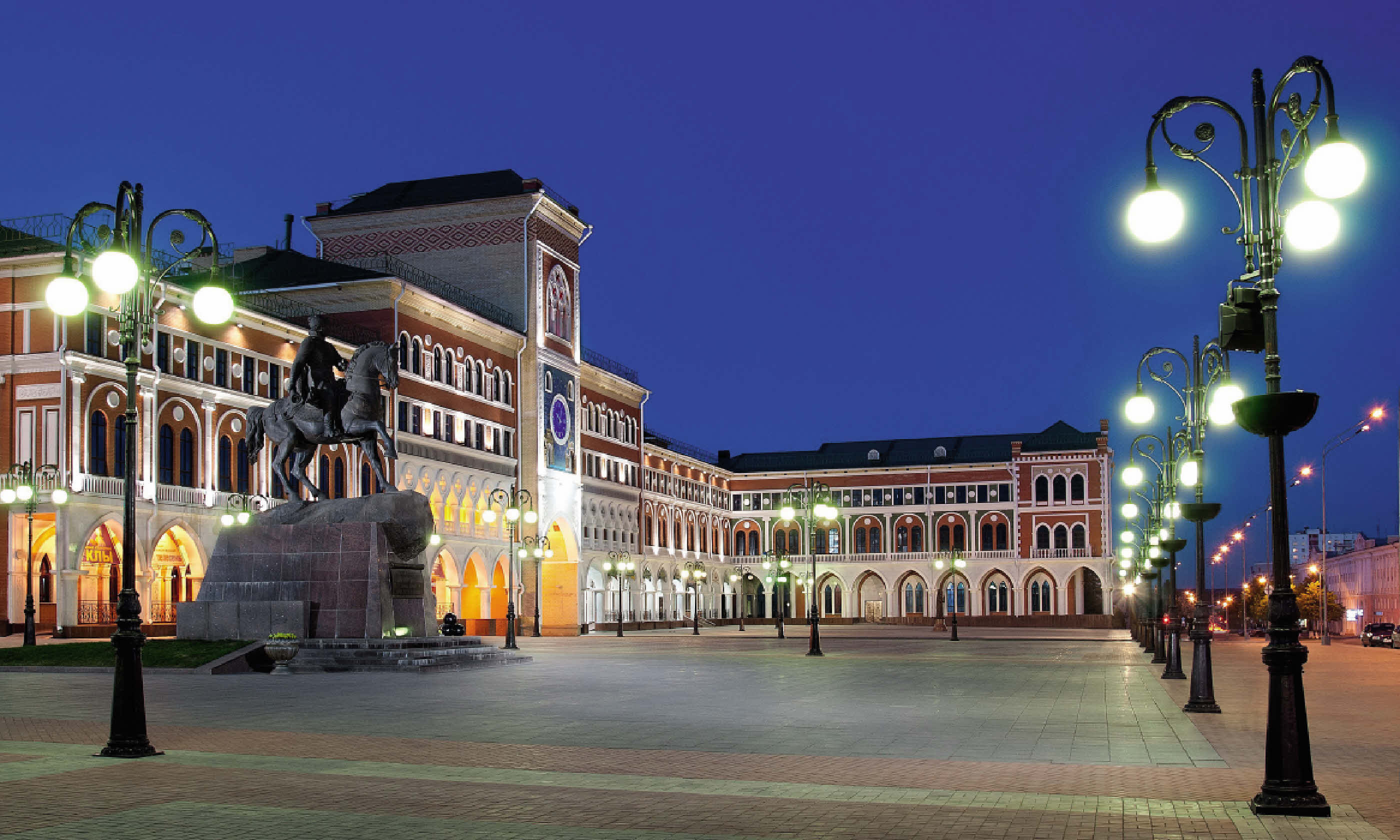 The main square of the Mari El republic's capital Yoshkar-Ola
The main square of the Mari El republic's capital Yoshkar-Ola
Yet now they seem extra relevant given the prevailing crisis of Russia’s intervention in Crimea and eastern Ukraine. If this current bloody mess is a precursor of how Russia might rule its republics I wondered what life must be like for those already assimilated? Are they subjugated people yielding to Russia’s power? Or thriving ethnic diversities with cultural and religious freedom? Only one way to find out.
The master brewers
At Cheboksary, capital of Chuvashia, we were greeted by Chuvash women dancing to accordion music in white dresses sewn with breastplates of coins. All very faux. But Tamara Vorobieyeva, our waiting Chuvash guide dressed in an embroidered scarlet kaftan, possessed the engaging enthusiasm of an explorer making first contact with a strange tribe. Tourists are a novelty here.
We were soon touring Cheboksary with excitable Tamara yielding her microphone like a Gatling gun. She explained that Chuvashians speak a Turkic language courtesy of the Bulgars who settled here around the eighth century before dispersing. Over time they mixed with the neighbouring Mari (more of them later) and were duly invaded by the Mongols before federating with Russia in 1552 for protection. They surrendered their paganism for Orthodox Christianity but, Tamara insisted, joining Russia was a matter of preservation rather than colonisation.
She said that 68% of the republic remains indigenous Chuvash while the remainder are ethnic Russians plus myriad minorities such as Ukrainians and Tatars. Trying to piece together this region’s complex cultural casserole would prove as challenging as solving a Rubrik’s cube only using one hand.
Cheboksary sits alongside the Volga, a river so wide that the opposite bank was barely visible. The city’s landmark is a 46m-high statue called Mother the Patroness, a sort of Chuvashian Christ the Redeemer. Otherwise Cheboksary retains a Soviet legacy I’d find common throughout these republics, with trolleybuses, solid neo-classical tenements and broad boulevards named after Lenin and Marx: “We haven’t got around to changing the street names,” offered Tamara.
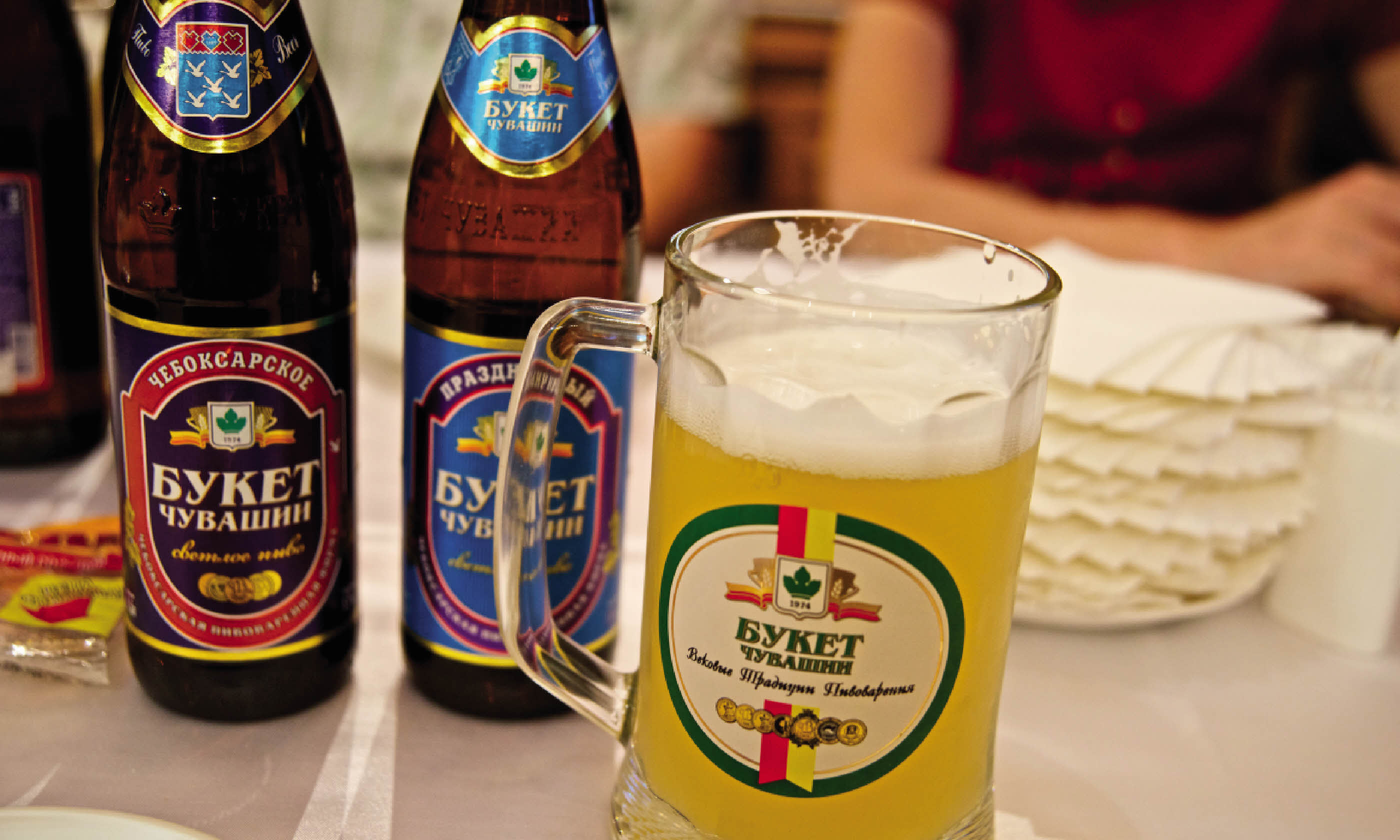 Sampling the beers in Chuvashia
Sampling the beers in Chuvashia
Hearteningly, she felt Chuvashia was well represented inside the Russian Federation. “We’re happy being part of Russia. We have our own national congress and our language is taught alongside Russian,” she said.
Chuvashia’s cheeriest statistic is providing Russia with 80% of its hops. The Chuvash are prodigious beer-brewers. “In Chuvash culture you’re more likely to be offered beer than tea,” said Tamara. It duly flowed during lunch, when the costumed dancers returned to perform a Pythonesque beer dance that saw me eventually engaged in a traditional kissing ceremony. I took one for the team.
The pagan survivors
There was barely time for a third (or was it fourth?) glass before we departed for our second republic that day, Mari El – which sounded more like a fashion magazine. It was a 94km drive north through pine lands to its capital, Yoshkar-Ola. Mari El National Museum contained artefacts and costumes relating to the Mari, a Finno-Ugric people who share a linguistic heritage with Finns and Estonians.
The museum guide, Nastia, said they were recorded migrating west from the Urals back in the sixth century. With 600,000 Mari remaining, they’ve long been a vulnerable minority so they too ceded to Russia. Nastia, raven-haired and dark-eyed, explained that it’s impossible to say how a true Mari looks because over centuries they’ve mixed with Russians and Tatars.
Yet the Mari remain the last true pagans of Europe. Recent photos showed
karts (shamans) in birch groves practising the Mari traditional religion that, according to Nastia, still thrives in the forests. “Every village has a kart. I have attended the ceremonies and the energy of our offerings, including animal sacrifices, travel up sacred birch trees to the spirits above,” she said.
Outside the museum, Svetlana Maimina was waiting to guide us around Yoshkar-Ola. “Are you Mari?” I ventured. “No, I’m Jewish,” answered the English tutor with an accent lifted from the streets of Brooklyn. She insisted she’d never been to America; I vowed to quit guessing ethnicity. “My parents are Ukrainian-Jews who migrated here after the Second World War,” she said. “I’m one of many minorities in Mari El among the Russian majority but I’ve never experienced anti-Semitism.”
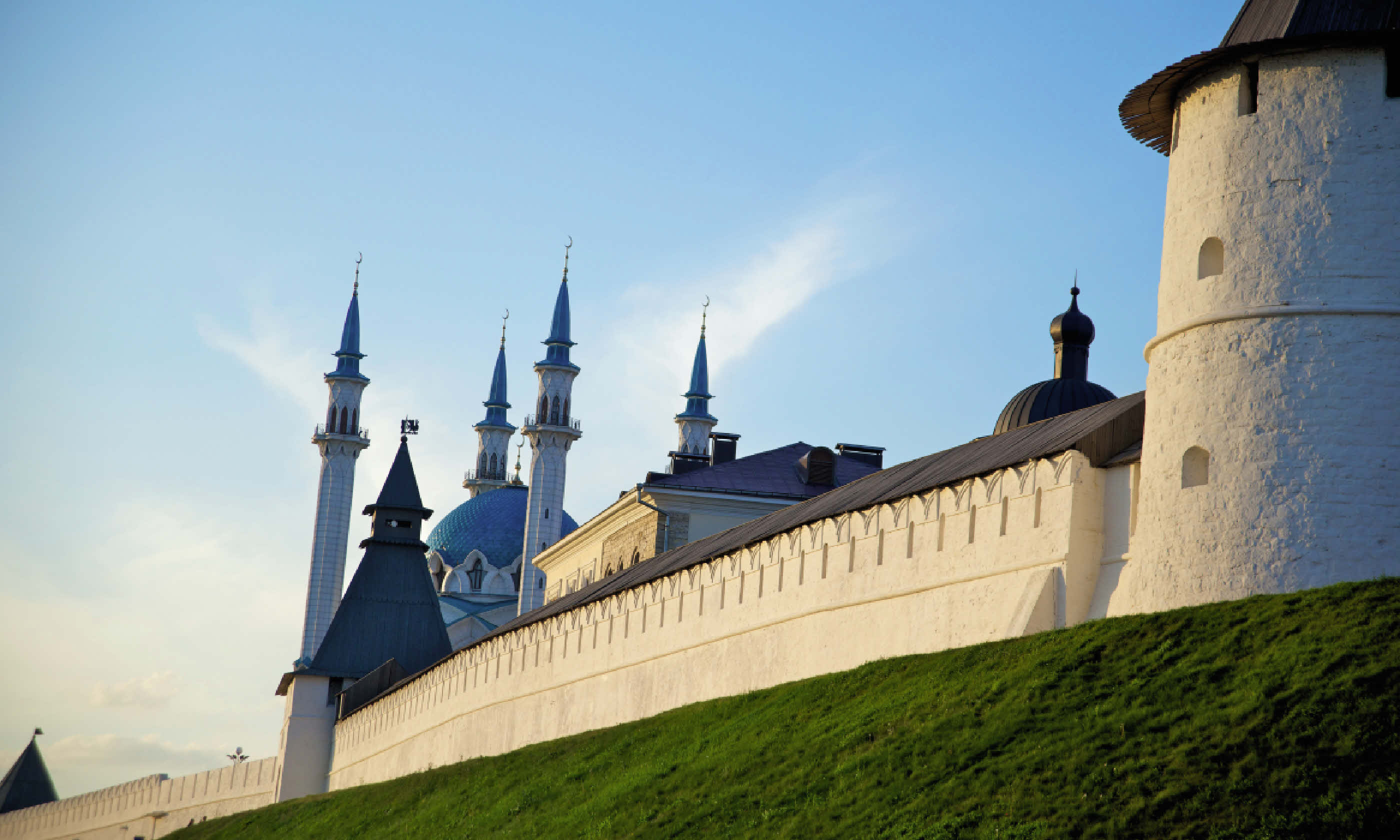 The Kremlin mosque, Tatarstan
The Kremlin mosque, Tatarstan
We began our tour – which was totally unexpected. Yoshkar-Ola has become a city of architectural preposterousness that makes Dubai seem like a paragon of modesty. “Ten years ago three adjectives could be applied to Yoshkar-Ola – boring, boring, boring,” quipped Svetlana. “Now, whatever architectural style you want to see you’ll find.”
Neo-Lego meets Disneyland is one description of Yoshkar-Ola’s showy rebuilt centre. Amid the abundant building cranes were a newly rebuilt replica Kremlin, a scaled-down fake of Bavaria’s Neuschwanstein Castle and a part-finished St Basil’s cathedral that was awaiting its golden domes. A fantasy Venetian clocktower was animated by a mechanical Jesus and the Apostles, while the pseudo-Gothic waterfront along the unfortunately named River Kokshaga resembled Bruges.
Totally flabbergasted, I asked how Mari El could afford this theme-park makeover. Svetlana smiled and shrugged: “They say our president looked out of his office window and didn’t like the view.”
The easy-going oil-men
There’s no mystery surrounding the wealth of Tatarstan, the largest republic we were visiting. Eastern Tatarstan overflows with oil and gas.
It was a 160km drive south to its capital, glittering Kazan, Russia’s third-largest city, home to 1.3 million people. Kazan’s darker-haired occasionally eastern-looking Muslim Tatar majority seemed to bear the most cohesive identity to date although our excellent Tatar guide, Rezida Mukhametzyanova, warned against stereotyping. “We’ve no particular look as we’re a mixture from Europe and Asia,” she said. Appropriately the word ‘Kazan’ translates as cauldron.
From Bulgar origins around the eighth century, the insatiable Mongolian horde assimilated these Tatar lands around 1230. The Kazan Khanate arose in 1438 but their persistent raids upon Russia hacked-off the tetchy Ivan the Terrible who conquered and subjugated the Tatars in 1552. The concept of Tatarstan re-emerged as a Soviet Socialist Republic within the USSR in 1922.
Kazan’s doughty survivor from 16th-century turbulence is the World Heritage-listed Kremlin, originally a tenth-century hilltop Tatar citadel, later refortified by Ivan. Inside its chunky whitewashed walls, protected by circular turrets topped with roofs resembling witches’ hats, is a glorious synthesis of Russian Orthodox and Islamic architecture.
The Kremlin’s most dazzling structures are barely 100m apart. Recently completed is the serene Qolsharif Mosque. Lofty needle-thin minarets ascend 58m above a central turquoise cupola; within a marbled interior, a 1,200kg Bohemian crystal chandelier illuminates Koranic verses and geometrical designs prominently featuring tulips. Adjacent is the 16th-century Cathedral of Annunciation, its powdery-blue and golden onion-shaped domes recently restored after Soviet neglect. Here, I walked in on a service. Black-robed priests with swinging thuribles of smouldering incense moved among a congregation facing the gilded iconostasis.
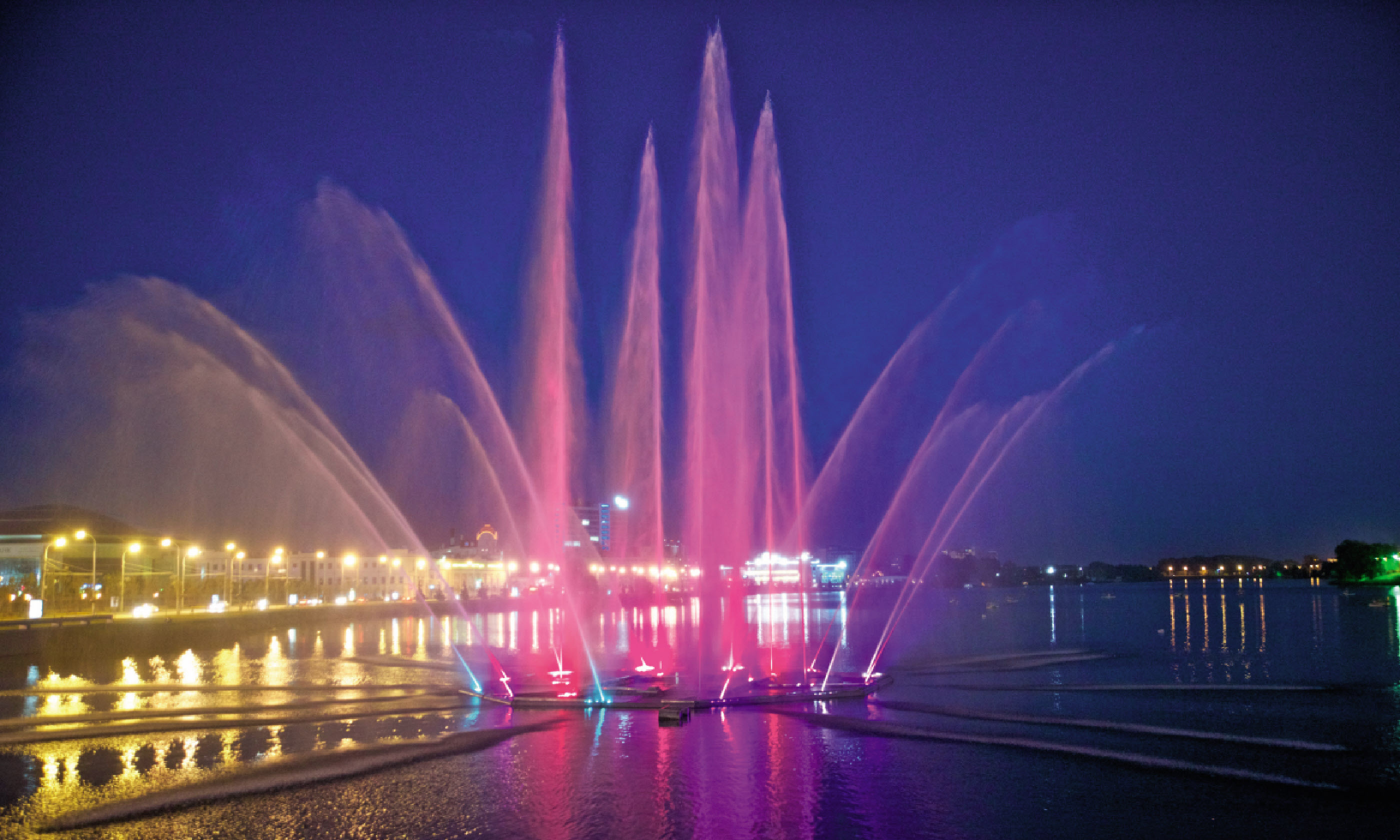 Tatarstan's night fountains
Tatarstan's night fountains
Rezida said both structures were completed simultaneously to show Tatarstan’s evenhandedness in religious matters. “All religious persuasions live in harmony,” she said. “There is no animosity between Christians, Muslims and Jews, or radicalism. I am under no pressure to wear a hijab.”
Such easy-going secularism can be sensed at night along Kazan’s cosmopolitan and celebrated Bauman Street. Here, we sat in a people-watching café, listened to buskers, watched illuminated fountains and indulged in
chak-chak (fried sugary dough) and other Tatar snacks.
The meadow redheads
From Kazan we advanced eastwards by rail to the Republic of Udmurtia. From the train’s surprising American diner buffet-car that served trout and mashed potato, we watched as pine forests and rolling monocultures of wheat in jet-black soil slipped by.
On arrival, Izhevsk, Udmurtia’s principal city, didn’t look too promising. This grey place was closed to foreign visitors during Soviet times because of its arms manufacturing; its most famous citizen was Mikhail Kalashnikov of AK-47 notoriety who died here in 2013. An enormous concrete arms factory near our hotel bore Soviet decorations such as the Order of Lenin, presumably for services to wanton destruction.
Our guide was 20-year-old Maria, an ethnic Russian student who seemed perplexed as to why tourists would want to see Udmurt culture. Udmurts make up only 30% of Udmurtia, she told us; the majority are Russian. Called the ‘meadow people’, they are a Permic tribe who migrated westwards from the Urals centuries ago, also with a language similar to Finns and Estonians. “How will I recognise Udmurts?” I asked. “Oh, they have very red hair,” Maria replied.
Maria guided us out into the countryside, to Ludorvai’s open-air ethnological museum. This reconstructed traditional village glossily projects an idealised impression of Udmurt existence: all well-appointed log cabins, saunas and bee-keeping. The museum guide wore traditional dress adorned with coins that looked familiarly Chuvashian. She was called Zangari. “It means little flower,” she said. “But that’s my work name. I’m really called Olga.” The Udmurts seemed to be the most assimilated culture yet. Zangari-née-Olga explained why: “During Soviet times village life was collectivised so Udmurt culture became very Russian. Nowadays parents want their children to learn Russian so our language is being spoken less.”
However, Medovy Spas saved the day. By luck, this annual festival of honey was being hosted at the museum, and ethnic Udmurts had come from all over the republic to celebrate it. Their costumes were vividly bright: pea-green, sky-blue and sunny yellow; many had red hair. Music and dance struck up, and honeycomb and moreish
kumushka (honey liquor) was sold from the back of LADAs. The tannoy announced that a ‘group of English’ had come to visit, and soon we were having our photographs taken with dagger-wielding Cossacks who’d dropped in from Krasnodar.
Our restless journey continued south to Ulyanovsk, the staging post for two final republics. Ulyanovsk had a pleasant park promenade hugging the Volga and an unashamed foot in the Soviet past. Every other statue was dedicated to its famous son, Vladimir Ilyich Ulyanov, aka Lenin. We visited his surprisingly bourgeois family home in a leafy neighbourhood, now an excellent museum.
From Ulyanovsk we made a long day-trip to Mordovia where the capital, Saransk, proved a curate’s egg of sports stadiums, the residence of celebrated actor Gerard Depardieu (who grouchily defected from France for tax reasons) and a cathedral dedicated to St Fyodor Ushakov – quite incongruously, the patron saint of nuclear-armed strategic bombers.
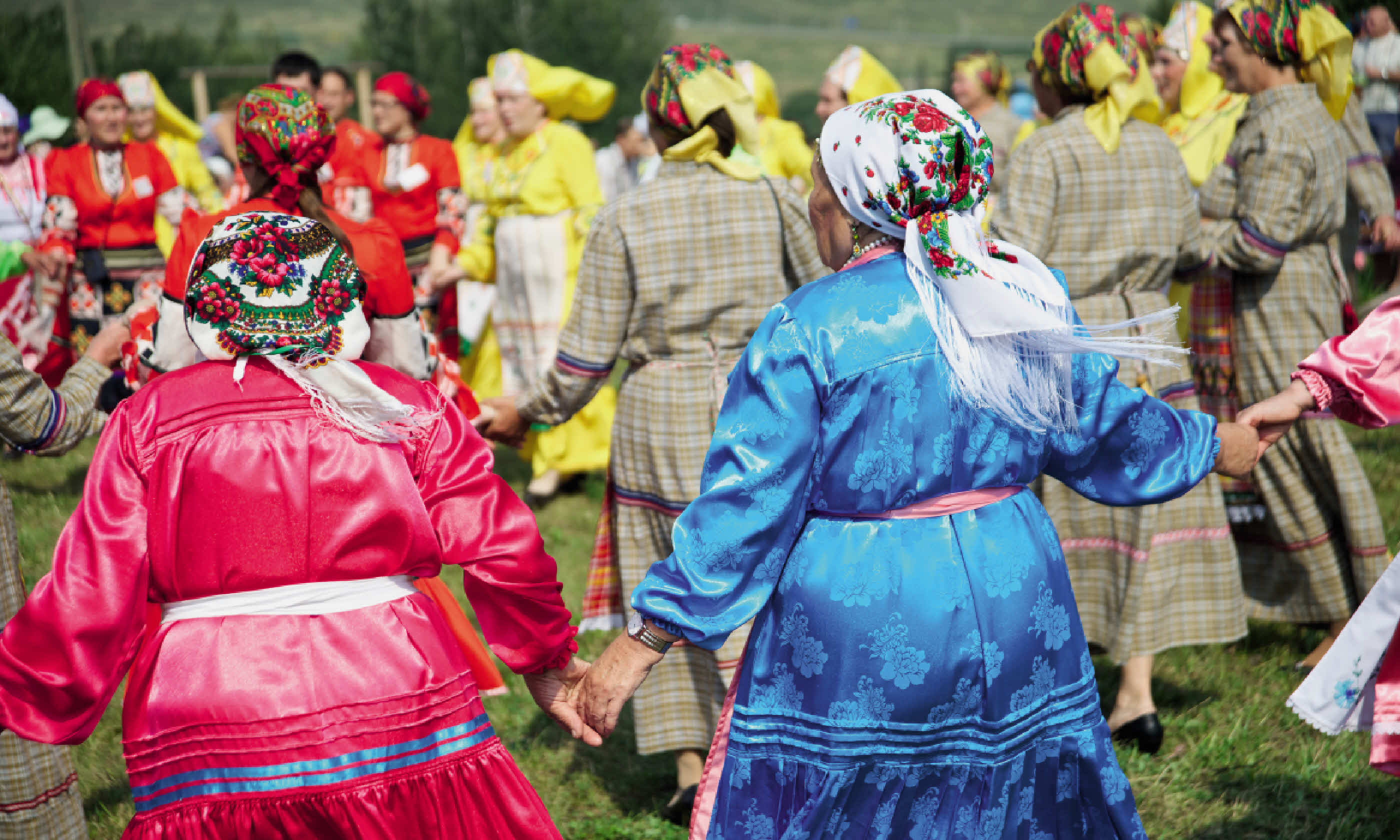 Medovy Spas festival in Udmurtia
Medovy Spas festival in Udmurtia
Like Udmurts, Mordvins are a minority in their homeland, assimilated into Russian culture. The Finno-Ugric Mordvins have been overrun by all and sundry: from Volga Bulgars to the Golden Horde and Tsarist Russia. A local Russian guide told us that Mordvins form two subgroups, Erzya and Moksha, and showed us pictures of their traditional dress – again, suspiciously Chuvashian. She also insisted that Mordvin women like wearing shorter skirts to show off their beautiful legs. Researching this fact was fraught with all sorts of pitfalls.
The exiled heroes
I left Saransk none the wiser about what an ethnic Mordvin looked like. I fared marginally better with the Bashkirs, 14 hours east on a final rail journey crossing two time-zones to Ufa, near the Urals. Bashkortostan’s native Muslim Bashkirs are closely allied to the Tatars. Following obligatory Mongol annihilation they too were vacuumed up by Mr Terrible. Large discoveries of oil have fashioned a fast-developing city sweeping away that past.
Typical of the heterogeneity of these Middle Volga republics, our local guide, Vladimir, was quarter Belorussian, 50% Russian and quarter Ukrainian but spoke Bashkir and Tatar. He took us to an imposing bronze statue of Bashkir national hero, Salavat Yulayev, seated astride a rearing horse. Yulayev unwisely took on Catherine the Great during an uprising between 1773 and 1775. He was trounced. “Catherine had Yulayev’s ears and nose cut off ,” said Vladimir. “And worse,” he added, “she exiled him for life to Estonia.”
Near the statue several tourist yurts offered refreshments such as
kumis (fermented mare’s milk). “This is how Bashkirs used to live,” said Vladimir.
Indeed, much of the culture I’d experienced across these republics was an echo of the past yet this engaging journey had taught me much. I still couldn’t tell apart the Mordvins, Chuvashians or Mari. But, despite Russia’s current seemingly aggressive nationalism, the multitudinous peoples of the Middle Volga seemed to exist in enduring harmony.
Make it happen
The author travelled with Russian and Eastern Europe specialist
Regent Holidays on its
Pioneering Russia’s Autonomous Republics Group Tour. Includes flights, accommodation, sightseeing tours and all transfers and transportation.
Russia has an excellent, punctual, good-value
railway service. Travelling in four-berth second-class sleeper carriages, with access to a dining car, is a comfy way to cover vast distances. The author’s trip included: Moscow-Cheboksary (13hrs), Kazan-Izhevsk (7hrs) and Ulyanovsk-Ufa (14hrs).
All photographs: Mark Stratton





